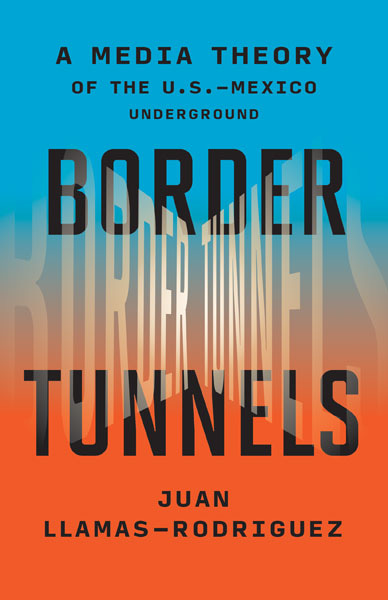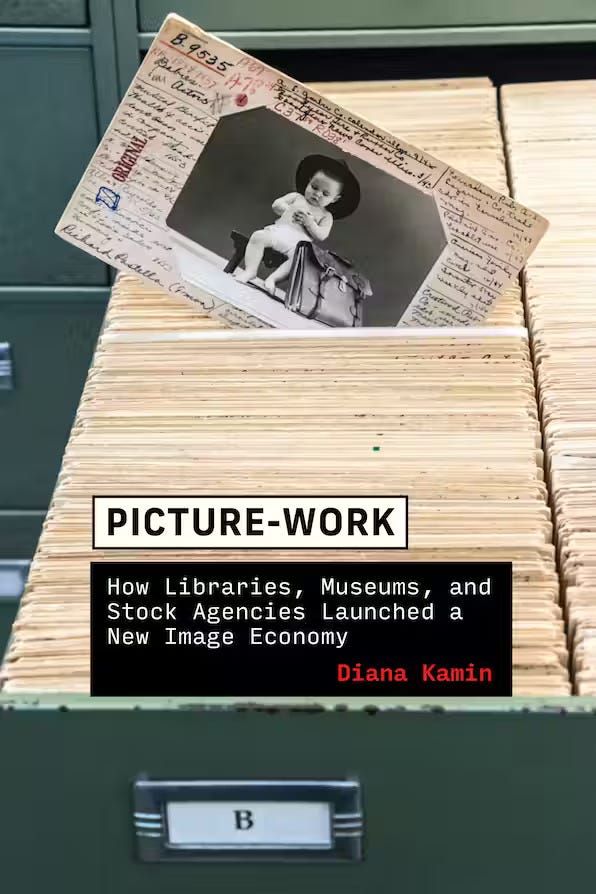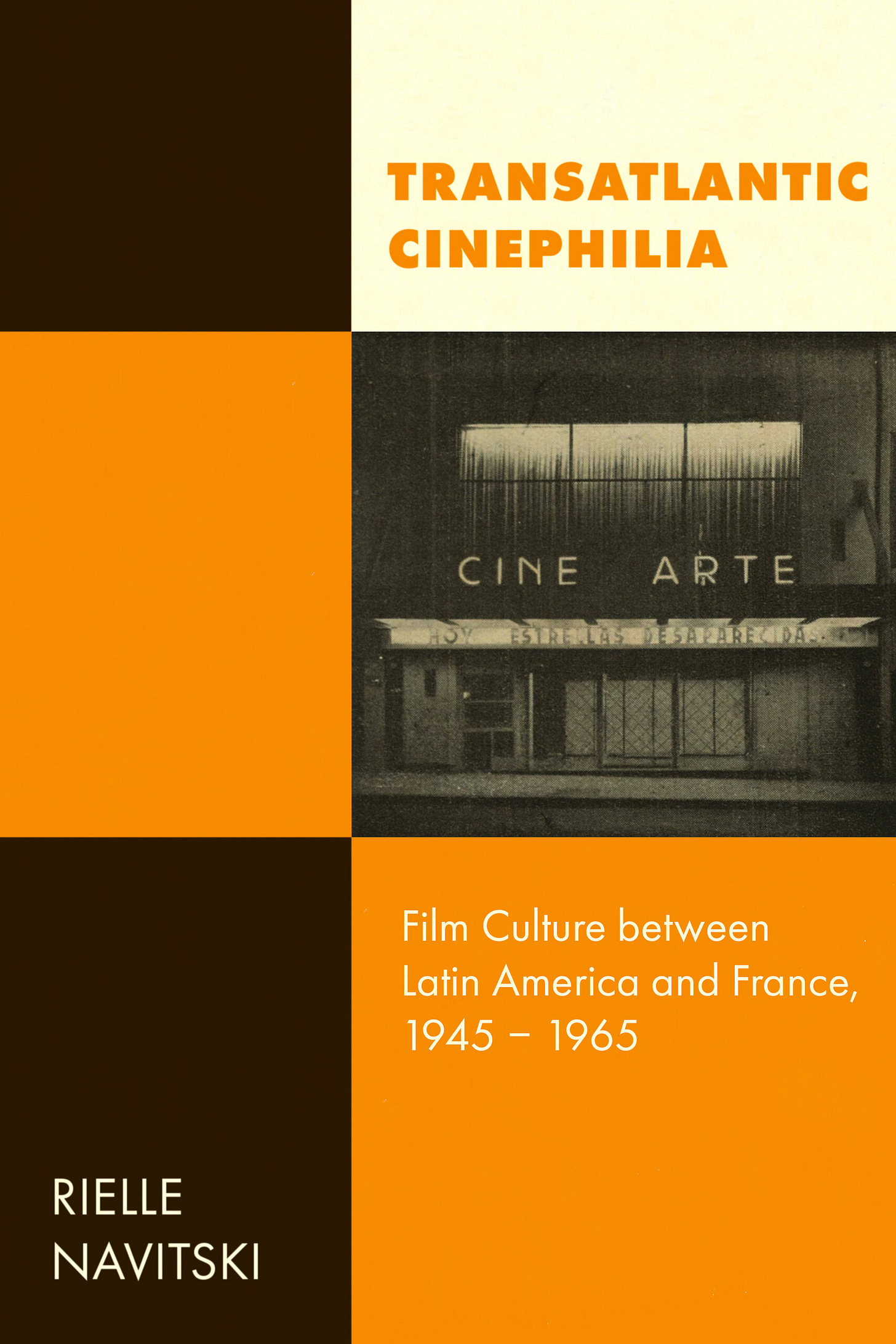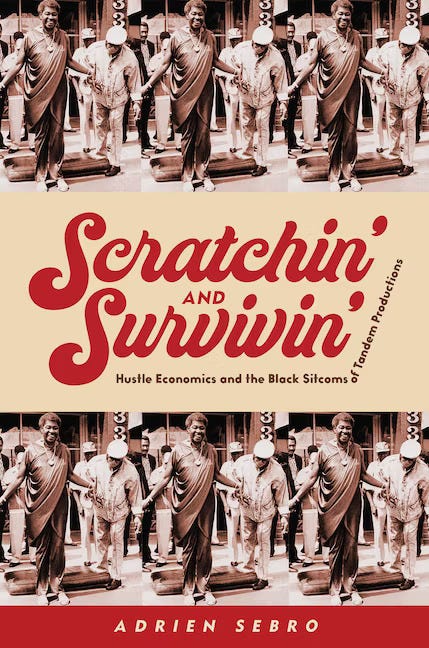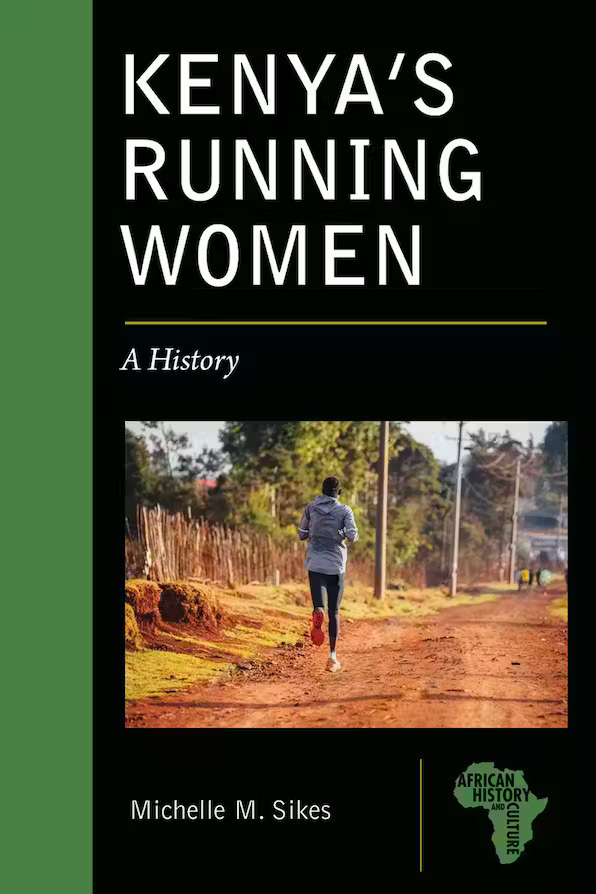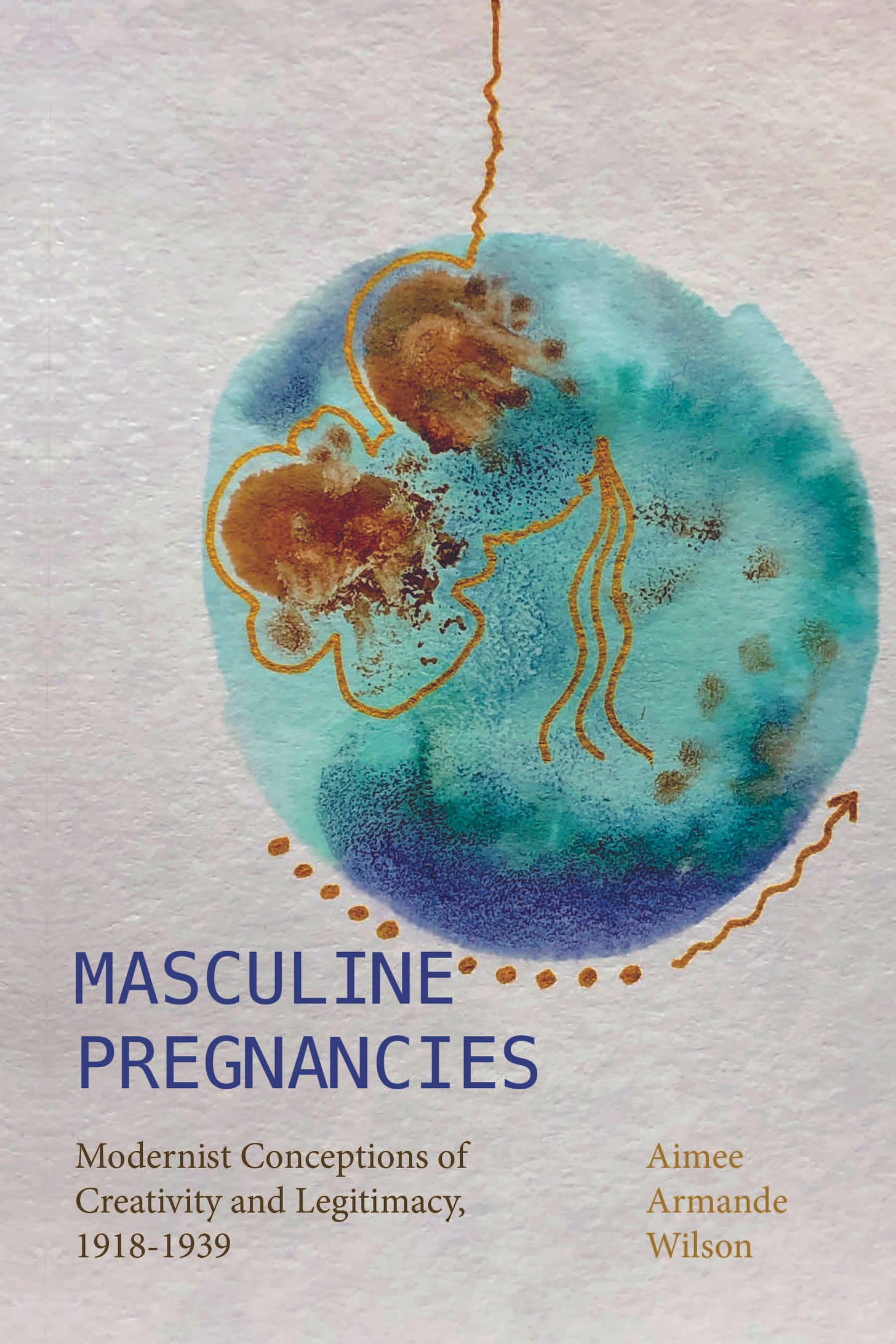Happy November, Manuscript Workers!
One last reminder that enrollment closes today for my self-paced Book Proposal Shortcut program. Sign up now if you need support for your book proposal writing in November and December (I hope to reopen for new enrollments in January). $50 from each sale today will go to UNRWA, the United Nations Relief and Works Agency for Palestinian refugees.
This month I have a lot of new books to share with you written by Manuscript Works readers and clients. They’ll be featured toward the end of this post, but first I want to share a more in-depth conversation with my client Dr. Juan Llamas-Rodriguez, whose book Border Tunnels: A Media Theory of the U.S.–Mexico Underground was just published by the University of Minnesota Press.
I’ve been talking to Juan about this project since 2019. I thought his experience of speaking to multiple publishers and facing some difficult decisions as to which direction to take his book would be illuminating for readers of this newsletter, so I asked if he might be willing to share his story here. Thankfully he agreed!
Here’s a little bit about the book from the publisher’s website:
A comparative media analysis of the representation of the U.S.–Mexico border
Analyzing the technologies, institutional politics, narrative tropes, and aesthetic decisions that go into showing border tunnels across multiple forms of media, Juan Llamas-Rodriguez argues that we cannot properly address border issues without attending to—and fully understanding—the fraught relationship between their representation and reality.
Our conversation below has been transcribed and edited for length and clarity.
Laura: Thanks for speaking with me today! To start, can you talk a little bit about the origins of this book?
Juan: When I started my first tenure-track job, I chose not to adapt my dissertation straight into a book. Looking back on my dissertation about a year after I defended it, I realized that the parts of it I liked most were about the figure of the narco tunnel, which eventually became the “border tunnel.” I started building a series of ideas and chapters around the material that I had on border tunnels. It took me almost two years to build that idea and write a proposal. I had a couple of chapters and a proposal but not a full manuscript written when I started talking to publishers about it.
Laura: How did you first approach publishers to tell them about your project?
Juan: I emailed several editors before my field’s annual conference in 2019. I probably reached out to about half a dozen publishers that I thought would likely be attending the conference. I emailed them with a general description of my project and the proposal draft I’d come up with, and asked if we could meet to discuss it at the conference. Not everyone replied, but I did have a few meetings at the conference, and got a sense of how the different editors saw the project and their level of interest. With some editors it became very obvious that my project just did not fit with what their press was doing, but they were nice enough to meet with me and chat. I did get some strong interest from a couple of people and that was very encouraging. That interest prompted me to finish the rest of the manuscript, because the interested presses were ones that required a full manuscript to move forward.
Laura: That makes sense. Some presses will move toward an advance contract with just a proposal and sample chapters, but since you were targeting presses that wanted to see a full manuscript from first-time authors, you went ahead and finished it before getting back in touch. Is that right?
Juan: Yes. I finished the manuscript about a year later and sent it to one of the editors I had spoken to at the conference. Because some publishers don’t want to move forward with reviewing a full manuscript simultaneously with other presses, I decided to just send the manuscript to one publisher at that point. The editor there looked over the manuscript and said they were still interested and wanted to send it out for peer review in summer of 2020. We were deep in the pandemic at this point, so it took ten or eleven months to get the reviews back. After about six months, I started checking in regularly with the editor, who assured me that the reviewers were engaged but that it was taking longer than usual for them to return their reports. I ended up getting the reviews back in spring of 2021.
Laura: What were the peer reviews like? Were they helpful?
Juan: The reviews were very thorough and very long. One of them asked for substantial revision. My first reaction was to think that I needed to do what they were asking for in terms of revision, because I needed to get my book published. After looking at the reviews more carefully, I realized that the reviewers were making some assumptions about what the book was trying to do that I didn’t necessarily agree with. It was helpful to see what people were expecting from the book and how I could address those expectations, but I didn’t necessarily want to change the book in those ways. In some cases, I didn’t even feel that I could do what the reviewers were suggesting.
The editor said that I didn’t have to adopt every change suggested by the reviewers, but that I would need to make some revisions and explain why I chose not to make others. They wanted to send the manuscript back out for review before committing to publish the book. I had some doubts about making the changes called for by the reviewers, which was when I reached out to you again.
Laura: That’s when we discussed your options in terms of possibly taking the manuscript to other publishers. You weren’t sure that the first publisher’s vision for the book fully aligned with yours, based on the feedback from reviewers, some of which felt pretty off-base.
Juan: I wasn’t sure I was committed to making all the changes they were asking for, and it felt like a gamble to make revisions and then wait a long time before having a commitment from the publisher, which wasn’t guaranteed. I will say that it was very nerve-wracking to tell the first press that I wanted to see if other presses might be a better fit, because at least there was a glimmer of possibility with the first press. What if no one else wanted the book at all?
The advantage of approaching other presses at that point was that I had a full manuscript ready to show them right away. I was able to go back to a few of the presses that I’d originally contacted about my proposal and another press that had reached out to me while my manuscript was under review. I was clear with everyone that I had been working with another press but they had asked for revisions I didn’t want to make. I wanted to make sure that the new presses understood what I wanted the book to do. At this point two presses expressed interest in the project.
Laura: Did you move forward with review at both presses?
Juan: Yes. I’d now spent nearly two years on the review process with the first press, and I needed to make progress toward getting the book published. Both presses agreed to simultaneous review (sending the full manuscript out to peer reviewers at the same time) and I think they conveyed to the reviewers that we needed an expedited review process. Being able to have the manuscript reviewed by both interested presses at the same time made the process less nerve-wracking for me.
Laura: What happened when the peer reviews came back?
Juan: Both sets of reviews came back within about three months. They were all fairly positive in terms of supporting the book moving forward. The reviews still had a lot of constructive feedback, but it was more helpful feedback this time. One of the reviews actually had substantial feedback in terms of reorganizing the structure of the book. I ultimately didn’t want to do that restructuring, but it was helpful for me to hear why they thought the chapter order should be rearranged, because of how they saw the contributions of each chapter and how the chapters supported the broader argument. In my response letter to the peer reviews, I was able to explain how I would make sure the contributions came through more clearly even if I didn’t take the specific suggestion to move the chapters around. Instead of changing the order of the chapters, I brought forward some of those contributions earlier in the book so that they wouldn’t be delayed until the later chapters.
Looking back, this was the moment when I saw the difference between getting feedback that I did not agree with and wasn’t aligned with my vision for the book and getting feedback that I still did not exactly agree with but that was productive and generative for what I was trying to do.
Laura: Did both presses want to move forward with your book after peer review?
Juan: Both editors asked me to write a response to the peer reviews that they could bring to their faculty editorial boards, in hopes of offering me a contract. I wrote responses for both presses and received the two contract offers within a couple weeks of each other. Throughout this process I had kept both editors up to date on where I stood with the other press. I now found myself in the opposite position to where I’d been months earlier, having options to choose from rather than being afraid no one would want to publish my book.
Laura: How did you end up deciding which press to go with?
Juan: Both contracts were pretty similar in terms of what they were offering, materially. I ended up choosing Minnesota because I thought about the other books they had been publishing and I wanted my book to be among them. I was already reading and citing a lot of their books and saw myself as being in conversation with their authors. Media studies is a wide field that incorporates a lot of different traditions and backgrounds, but Minnesota’s version of media studies was the one I most saw myself as being a part of. I think that was the deciding factor in the end.
I spent about six months making the final revisions and it went back to one of the reviewers just to make sure they were fully on board with the revised version. It took two years from when I signed the contract to when the book was released.
Laura: Do you have any other thoughts about how you chose a press that you would want to share with prospective authors?
Juan: I’ll say that the press I ended up publishing with was not one of the ones that got back to me when I sent out that initial email before my annual conference. The editorial staff shifted a bit over the years and my book ended up being a great fit later on. So I would say to keep your options open even if you don’t get an immediate positive response to your early inquiries.
After going through the whole process, I’ve been very happy with my decisions. I now understand the leeway I have as an author in terms of standing by the version of the book that I want to write. It’s not just about finding a press that feels the book is a fit, but also about knowing that the press sees the fit in the same way you do. Even thinking about how the book would be promoted—that wasn’t something I was thinking about at the beginning of the process, but I now see how the right press will promote my book as being the particular kind of media studies book I want it to be.
Laura: Thank you, Juan. I think other scholars are going to find your experience really helpful to hear about, so I appreciate your candor in sharing it!
I hope you enjoyed this behind-the-scenes glimpse into an aspect of the book publishing process that doesn’t often get talked about publicly. And I’m so glad everything worked out for Juan and his book, even if it wasn’t always a straightforward path
If you’d like to read more about how to find the right publisher for your scholarly book, check out this post from the Manuscript Works archive.
A number of other books from Manuscript Works clients and readers are coming out soon, and I’m delighted to share them with you below. I’ll be sharing a full year-end round-up in December, so if you had a book released any time in 2023 and would like me to include it there, please send me your cover jpg, link to your publisher’s website, and any discount codes you’d like to share. (If you have a book coming out in 2024, also feel free to let me know about it so I can slate it for a future newsletter.)
You can reply directly to any of my newsletters in your inbox, or if you’d like to make extra-sure I flag your message as a new book to share, you can email me at laura@manuscriptworks.com using the subject line “NEW BOOK.”
Without further ado, here are the new releases for November and December 2023:
New Books by Manuscript Works Readers & Clients
Kelley Fong’s Investigating Families: Motherhood in the Shadow of Child Protective Services
From the Princeton University Press website:
It’s the knock on the door that many mothers fear: a visit from Child Protective Services (CPS), the state agency with the power to take their children away. Over the last half-century, these encounters have become an all-too-common way of trying to address family poverty and adversity. One in three children nationwide—and half of Black children—now encounter CPS during childhood.
In Investigating Families, Kelley Fong provides an unprecedented look at the inner workings of CPS and the experiences of families pulled into its orbit. Drawing on firsthand observations of CPS investigations and hundreds of interviews with those involved, Fong traces the implications of invoking CPS as a “first responder” to family misfortune and hardship. She shows how relying on CPS—an entity fundamentally oriented around parental wrongdoing and empowered to separate families—organizes the response to adversity around surveilling, assessing, and correcting marginalized mothers. The agency’s far-reaching investigative apparatus undermines mothers’ sense of security and shapes how they marshal resources for their families, reinforcing existing inequalities. And even before CPS comes knocking, mothers feel vulnerable to a system that jeopardizes their parenthood. Countering the usual narratives of punitive villains and hapless victims, Fong’s unique, behind-the-scenes account tells a revealing story of how we try to protect children by threatening mothers—and points the way to a more productive path for families facing adversity.
Use code PUP30 to get 30% off Investigating Families directly from Princeton University Press.
Diana Kamin’s Picture-Work: How Libraries, Museums, and Stock Agencies Launched a New Image Economy
From the MIT Press website:
How the image collection, organized and made available for public consumption, came to define a key feature of contemporary visual culture.
The origins of today's kaleidoscopic digital visual culture are many. In this book, Diana Kamin traces the sharing of photographs to an image economy developed throughout the twentieth century by major institutions. Picture-Work examines how three of these institutions—the New York Public Library, the Museum of Modern Art, and the stock agency H. Armstrong Roberts Inc.—defined the public's understanding of what the photographic image is, while building vast collections with universalizing ambitions. Highlighting underexplored figures, such as the first rights and reproduction manager at MoMA Pearl Moeller and visionary NYPL librarian Romana Javitz, and underexplored professional practices, Diana Kamin demonstrates how bureaucratic work communicates ideas about images to the public.
Kamin artfully shows how the public interfaces with these image collections through systems of classification and protocols of search and retrieval. These interactions, in turn, shape contemporary image culture, including concepts of authorship, art, property, and value, as well as logics of indexing, tagging, and hyperlinking. Together, these interactions have forged a concept of the image as alienable content, which has intensified with the advent of digital techniques for managing image collections. To survey the complicated process of digitization in the nineties and early aughts, Kamin also includes interviews with photographers, digital asset management system designers, librarians, and artists on their working practices.
Rielle Navitski’s Transatlantic Cinephilia: Film Culture between Latin America and France, 1945-1965
From the University of California Press website:
In the two decades after World War II, a vibrant cultural infrastructure of cineclubs, archives, festivals, and film schools took shape in Latin America through the labor of film enthusiasts who often worked in concert with French and France-based organizations. In promoting the emerging concept and practice of art cinema, these film-related institutions advanced geopolitical and class interests simultaneously in a polarized Cold War climate. Seeking to sharpen viewers' critical faculties as a safeguard against ideological extremes, institutions of film culture lent prestige to Latin America's growing middle classes and capitalized on official and unofficial efforts to boost the circulation of French cinema, enhancing the nation's soft power in the wake of military defeat and occupation. As the first book-length, transnational analysis of postwar Latin American film culture, Transatlantic Cinephilia deepens our understanding of how institutional networks have nurtured alternative and nontheatrical cinemas.
Adrien Sebro’s Scratchin’ and Survivin’: Hustle Economics and the Black Sitcoms of Tandem Productions
From the Rutgers University Press website:
The 1970s was a golden age for representations of African American life on TV sitcoms: Sanford & Son, Good Times, The Jeffersons. Surprisingly, nearly all the decade’s notable Black sitcoms were made by a single company, Tandem Productions. Founded by two white men, the successful team behind All in the Family, writer Norman Lear and director Bud Yorkin, Tandem gave unprecedented opportunities to Black actors, writers, and producers to break into the television industry. However, these Black auteurs also struggled to get the economic privileges and creative autonomy regularly granted to their white counterparts.
Scratchin’ and Survivin’ discovers surprising parallels between the behind-the-scenes drama at Tandem and the plotlines that aired on their sitcoms, as both real and fictional African Americans devised various strategies for getting their fair share out of systems prone to exploiting their labor. The media scholar Adrien Sebro describes these tactics as a form of “hustle economics,” and he pays special attention to the ways that Black women—including actresses like LaWanda Page, Isabel Sanford, and Esther Rolle—had to hustle for recognition. Exploring Tandem’s complex legacy, including its hit racially mixed sitcom Diff’rent Strokes, he showcases the Black talent whose creative agency and labor resilience helped to transform the television industry.
Michelle M. Sikes’ Kenya’s Running Women: A History
From the Michigan State University Press website:
Since Pauline Konga’s breakthrough performance at the 1996 summer Olympics in Atlanta, the world has become accustomed to seeing Kenyan women medal at major championships, sweep marathons, and set world records. Yet little is known about the pioneer generation of women who paved the way for Kenya’s reputation as an international powerhouse in women’s track and field. In Kenya’s Running Women: A History, historian and former professional runner Michelle M. Sikes details the triumphs and many challenges these women faced, from the advent of Kenya’s athletics program in the colonial era through the professionalization of running in the 1980s and 1990s. Sikes reveals how over time running became a vehicle for Kenyan women to expand the boundaries of acceptable female behavior. Kenya’s Running Women demonstrates the necessity of including women in histories of African sport, and of incorporating sport into studies of African gender and nation-building.
Aimee Armande Wilson’s Masculine Pregnancies: Modernist Conceptions of Creativity and Legitimacy, 1918-1939
From the SUNY Press website:
Who is taken seriously as an artist? What does gender have to do with it? Is there a relationship between artistic creation and physical procreation? In Masculine Pregnancies, Aimee Armande Wilson argues that modernist writers used depictions of "mannish" pregnant women and metaphors of male pregnancy to answer these questions. The book places "masculine pregnancies" in works by Djuna Barnes, Willa Cather, William Faulkner, and Ezra Pound in the context of interwar debates about eugenics, immigration, midwifery, and sexology in order to redefine the relationship between creativity and gender in modernism. Attending to recent developments in queer theory, Wilson challenges the critical assumption that figures of masculine pregnancy necessarily reinforce oppressive norms. The book's first half shows how some writers indeed used such figures to delegitimize artists who were not white, male, and heterosexual. The second half then shows how others used masculine pregnancies to extend legitimacy to mannish women, dark-skinned immigrants, and their (pro)creations—and did so a century before the current boom in queer pregnancy narratives.
Thanks for reading this week! Don’t forget to sign up for the Shortcut if you need support for your book proposal writing this month! See you next Wednesday!




